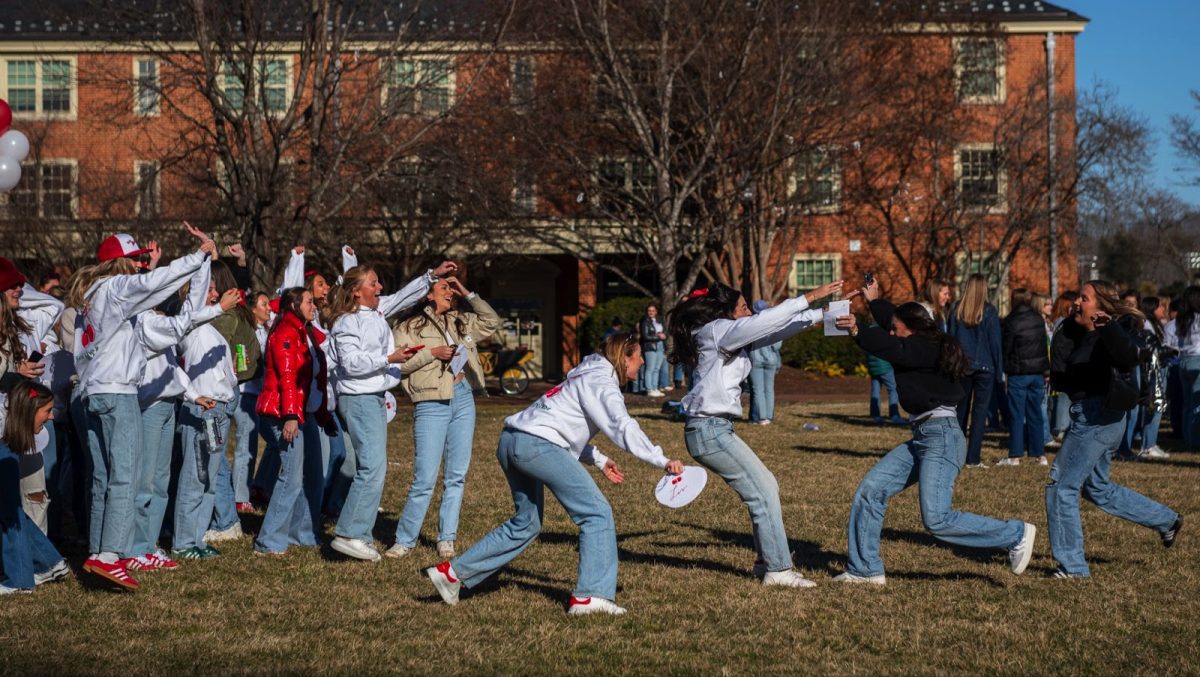Nobody has ever, or would ever, use the words “sporty” or “athletic” to describe me. Despite the fact I frequently dress in athleisure clothing, I am not athletic — I am more leisure than anything.
As a second grader, I attempted recreational soccer, but I didn’t like it. I took swimming lessons until my eyesight got so bad that I could no longer swim in a straight line, even with the aid of corrective prescription goggles. I played recreational softball until the eighth grade, when the rec league ended. Sports were nothing more to me than recreation and occasional obligation. They weren’t my favorite activity — I would have much rather be painting or reading — but they were an activity.
In a similar fashion to these athletic attempts, I enjoyed being a spectator but I never really understood the nuances of sports games. Even now, after five years of cheering on my high school and college football teams with the marching band, I am not quite sure how a team gets a second or third down or what play would be ideal to make next. Same goes for baseball, which I would consider my favorite sport and the easiest to understand. It’s the sport I have the most experience watching, as one of my younger brothers plays year-round on multiple teams. When should a batter bunt or not?
Despite my lack of athletic prowess and analytical knowledge, as a self-described artist, I have noticed a particular and unique beauty in sports.
Consider the invention of sports — how intelligent and creative those who created them must’ve been. Who decided what a first down was? Creating a game calls for a certain amount of imagination. Little kids run around making up pretend games on their infinite free will; meanwhile, adults channel their inner-child to create an activity in which two teams run plays down a 100-yard field, trying to score a touchdown. Games may seem so easy, but they require a lot of thought.
Rules and regulations create strict standards in sports, but none of these appear arbitrary. Everything in a sports game is a deliberate method to make the sport interesting and fair. In basketball, a player is awarded a free throw if they are fouled, deterring teams from playing dirty. An entire game can be determined by a single free throw.
There are also the pleasing aesthetics of the individual body in sports. Sports aren’t merely something one does; it’s something one performs. Although most athletes have an innate ability to perform well at their craft, sports are a craft because people have to work at it. My brother, the baseball player, has spent many hours in a batting cage with my father watching, giving feedback on how to turn his hips into the swing to make the hit more powerful. A soccer player must learn how to precisely hit the ball at the right intensity with the sweet spot of his foot so that it refracts at the angle that will send the ball into the goal.
The human body is quite amazing and underrated. We can move our bones and muscles in all different sorts of ways (think of a contortionist or any simple stretch). It is no small feat to exercise lightly or even play a sport. Everything in our bodies must work in conjunction, without giving out or getting injured. Athletes not only move a lot, but they do it with such grace. Take swimming for example. Synchronized swimming is the epitome of athleticism and grace, combining the motion of the water with the delicacy and musicality of dance. However, regular swimming is still just as special. A swimmer’s foot must act like flippers to propel the swimmer forward; a swimmer’s hand must cut through the water.
Beyond the individual, there is a magnificence in the camaraderie among a team or among fans. As a group, any sports team must play together like individual parts in a well-oiled machine. Sports teams share a common goal: winning, or, because it’s not always about winning, having a good time doing something they enjoy. Sports players aren’t in it for anybody else but themselves.
Fans of a particular sport or sports team, especially professionals, come together in support. Sports can defy class, race, and language — a rich Manhattan executive can have the same fervor for the Yankees as a middle-class worker from Staten Island. Often, a love for a specific team will carry down from generation to generation. Sports aficionados are wild, crazy and passionate. They’ll yell for hours, losing their voice, to cheer on their team to victory. Or they spend weekends in front of the television, hooked on the edge of their seat. They invest their time and love into those they watch. They view athletes as heroes that they stick with during triumph and defeat.
Even on the other hand, sports creates high-drama situations and rivalries among teams. The thrill that fans experience is that adrenaline rush that all humans crave.
To the naked eye, sports are either just a fun, regulated way to exercise and make endorphins or a form of entertainment. On a closer and artistic examination, one will find that there is an unexpected, inherent beauty in sports.













